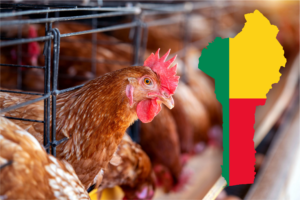Hydroponic Barley Fodder: A Sustainable Lifeline for Livestock and Rural Economies
In an era of escalating climate uncertainty and dwindling arable land, hydroponic barley fodder is emerging as a vital innovation in sustainable agriculture. This rapid soil-less method of growing livestock feed, cultivated from barley seeds in a controlled environment, can transform the economic and social fabric of rural regions facing food insecurity and environmental stress.

The hydroponic system bypasses the limitations of traditional agriculture. Using nutrient-enriched water instead of soil, farmers can cultivate lush, green barley fodder within 7 to 10 days, regardless of weather conditions. The result is a compact mat of roots and shoots that provides high-protein, chemical-free nutrition for cattle, sheep, goats, and poultry. By requiring minimal land, water, and human labor, hydroponic fodder systems promise consistent productivity even amid drought, land degradation, or erratic rainfall.
Economically, the technology offers a new framework for resilience. In regions where livestock production forms the backbone of rural livelihoods, such as across West Africa, the Sahel, East Africa and South Asia, hydroponic systems could stabilize feed supplies, reduce production costs, and cushion farmers against volatile feed prices. This innovation also opens investment opportunities for agri-tech startups and regional development banks, aligning with continental efforts like the African Continental Free Trade Area (AfCFTA) to promote sustainable agribusiness and reduce import dependence.
Yet, the implications go beyond economics. For families dependent on livestock, reliable fodder translates to improved household income, better nutrition, and reduced migration pressures. In cultural terms, where herding and animal care are integral to identity and tradition, hydroponic fodder supports continuity without sacrificing progress. Socially, it strengthens community resilience—particularly for women and youth who manage small livestock enterprises—by providing an adaptable, low-barrier entry into the agri-economy.
![]()
However, the transition also poses challenges. Initial setup costs, access to electricity and water, and the need for technical training may widen disparities between well-capitalized and small-scale farmers. Policymakers and regional organizations must therefore integrate hydroponic feed systems into broader rural development frameworks, emphasizing shared infrastructure, cooperative ownership, and climate financing mechanisms.
As the world edges toward climate-adaptive food systems, hydroponic barley fodder offers more than a technological fix. This agritech represents a shift in how societies think about sustainability, economic equity, and the relationship between nature and innovation. With strategic investment and inclusive governance, it could become a cornerstone of regional food security and a model for harmonizing tradition with technology in the 21st-century agricultural economy.









